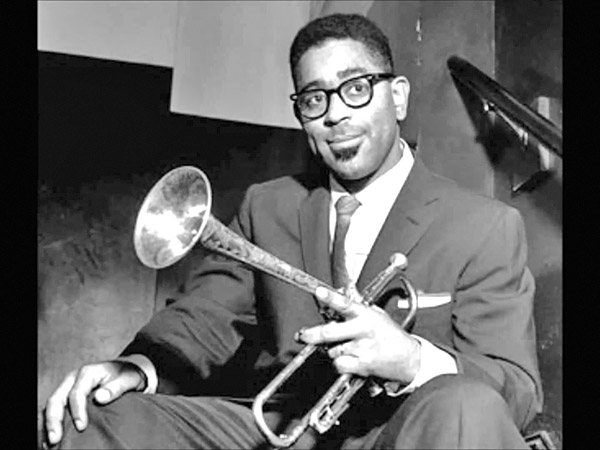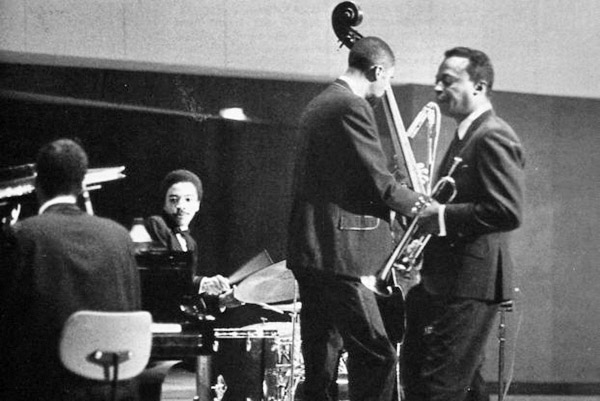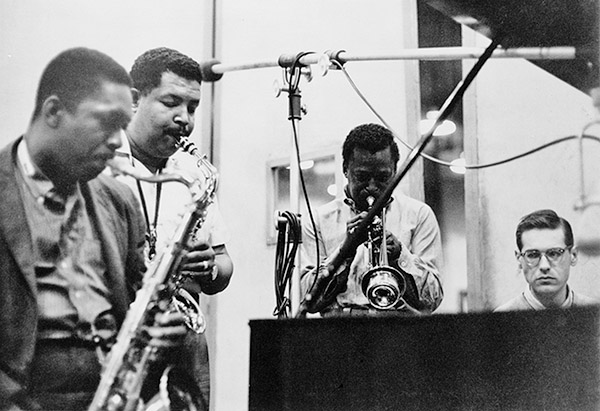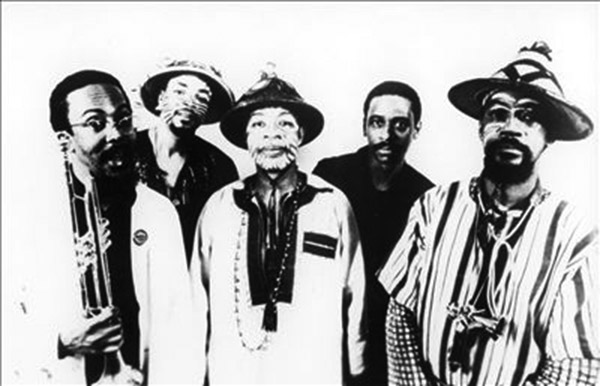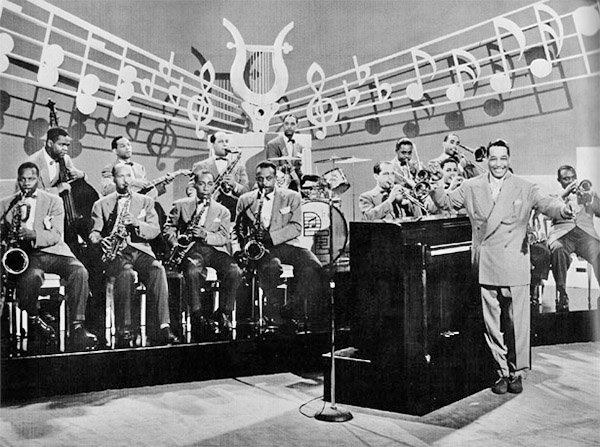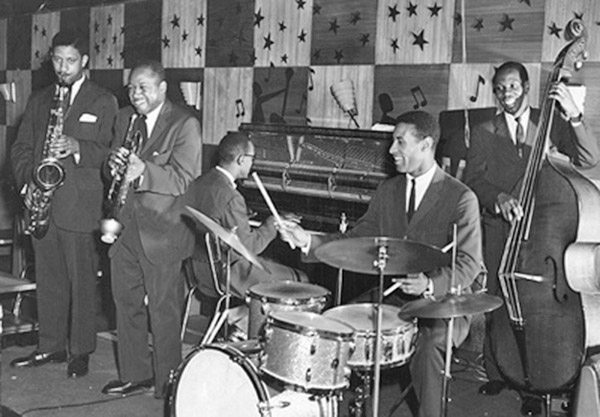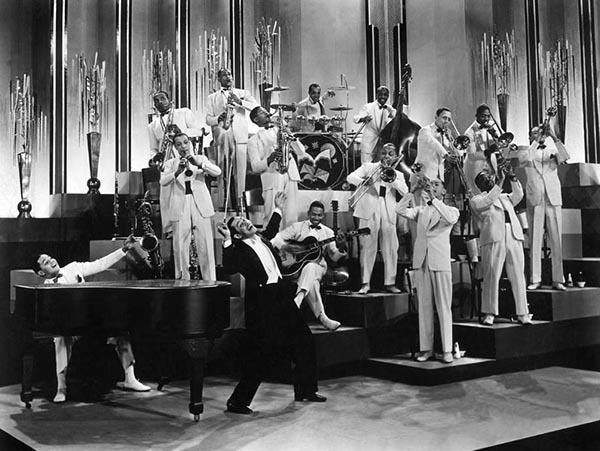In honor of Black Music Month, the Birmingham Times is highlighting some of the great musical groups across several genres. So far, the series has covered soul (June 2), gospel (June 9), hip-hop (June 16). Today, it concludes with jazz.
Any list of the greatest jazz groups, bands, and orchestras will have certain givens: Count Basie’s, Dizzy Gillespie’s, and Duke Ellington’s orchestras and any group with Miles Davis (the subject in the biopic “Miles Ahead,” released in April 2016) as a member. This list is no different. Those giants are mentioned here—and Davis, of course, shows up multiple times.
Miles Davis Quintet (1965–1968)
There is little argument that the Miles Davis Quintet—featuring Wayne Shorter, Herbie Hancock, Ron Carter, and Tony Williams—is one of the classic combos in jazz history. But it almost didn’t happen. In 1963, Davis struggled to maintain a steady lineup. By the late spring, he had hired the core of the group with Hancock on piano, Carter on bass, Williams on drums, and either George Coleman or Sam Rivers on tenor sax. The final piece of the puzzle would arrive in late 1964, with saxophonist Wayne Shorter. This was called the Second Quintet because the first, founded in 1955, might have been even greater (more about that below). This band recorded the albums “E.S.P.,” “Miles Smiles,” “Sorcerer,” “Nefertiti,” “Miles in the Sky,” and “Filles de Kilimanjaro”—as well as the “Complete Live at the Plugged Nickel 1965,” a box set considered by the “Penguin Guide to Jazz” to be the group’s crowning achievement.
Miles Davis Quintet (1955–1957)
Known as the First Quintet, this group—with John Coltrane, William “Red” Garland, Joseph “Philly Joe” Jones, and Paul Chambers—could achieve nothing less than jazz immortality. In the summer of 1955, Davis was offered a contract with Columbia Records if he could form a regular band. He assembled Walter “Sonny” Rollins on tenor saxophone, Garland on piano, Chambers on bass, and Jones on drums. At the recommendation of Jones, Davis replaced Rollins with Coltrane. The group expanded to a sextet with the addition of Julian “Cannonball” Adderley on alto saxophone. It would be tough to find a greater group of jazz musicians. Not to mix metaphors, but this lineup is rivaled only by the 1927 New York Yankees.
Art Ensemble of Chicago
The Art Ensemble of Chicago enjoyed a critical reputation as the finest and most influential avant-garde jazz ensemble of the 1970s and 1980s. It all began in the late 1960s and early 1970s, when the Art Ensemble helped pioneer the fusion of jazz with European art music and indigenous African music. It also combined elements of jazz history and pre-history—music from sanctified church services, minstrel shows, and bawdy houses of late-19th- and early-20th-century America—with a modernist spirit of experimentation. Originally comprised of saxophonists Roscoe Mitchell and Joseph Jarman, trumpeter Lester Bowie, bassist Malachi Favors, and later drummer Famoudou Don Moye, no single individual was greater than the whole. The band was an assortment of composers and improvisers of great individuality. Collectively, they created a compelling and unique entity.
The World Saxophone Quartet
This jazz ensemble, whose sound incorporates elements of free funk and African jazz, has more than two dozen albums to its credit. Founded in 1977, the group mainly recorded and performed as a saxophone quartet, usually with a lineup of two altos, a tenor, and a baritone (reflecting the composition of a classical string quartet), but also was joined occasionally by drummers, bassists, and other musicians. The original members were Julius Hemphill (alto and soprano saxophone, flute), Oliver Lake (alto and soprano saxophone), Hamiet Bluiett (baritone saxophone, alto clarinet), and David Murray (tenor saxophone, bass clarinet). The first three had worked together as members of the Black Artists’ Group in St. Louis, Mo.
Duke Ellington’s Jazz Orchestra
Edward Kennedy “Duke” Ellington took individuals considered to be among the best musicians of their time and melded them into the best-known orchestral unit in the history of jazz. Some members stayed with the orchestra for several decades. A master at writing miniatures, Ellington often composed specifically to feature the style and skills of his individual musicians. Often collaborating with others, Ellington wrote more than 1,000 compositions. His extensive body of work is the largest recorded personal jazz legacy, and many of his pieces have become standards. On Feb. 24, 2009, the United States Mint launched a new coin featuring Duke Ellington, making him the first African-American to appear by himself on a circulating U.S. coin. Among the numerous accolades he has received are a Grammy Lifetime Achievement Award and the highest civilian awards on both sides of the pond—the U.S. Presidential Medal of Freedom and the French Legion of Honor. Ellington is, indeed, one of the best in any genre of music.
The Count Basie Orchestra
William James “Count” Basie formed his own jazz orchestra—the Count Basie Orchestra—in 1935 and led the group for almost 50 years. He created such innovations as using split tenor saxophones, emphasizing the rhythm section, riffing with a big band, bringing in arrangers to broaden the sound, and many more. Several musicians came to prominence under Basie’s direction, including tenor saxophonists Lester Young and Herschel Evans; guitarist Freddie Green; trumpeters Wilbur “Buck” Clayton and Harry “Sweets” Edison; and singers Jimmy Rushing and Joe Williams. Basie favored the blues, and in New York City he began showcasing some of the most notable blues singers of the era: Billie Holiday, Jimmy Rushing, Joseph “Big Joe” Turner and Helen Humes. Basie’s theme songs were “One O’Clock Jump,” developed in the early days of his band, and “April in Paris.” In 2005, “One O’Clock Jump” was included in the Library of Congress National Recording Registry by the National Recording Preservation Board, which annually selects songs that are “culturally, historically, or aesthetically significant.”
The Jazz Messengers
Founding drummer Art Blakey led or co-led this group from its genesis in the early 50s. Over the years, “Art Blakey” and “Jazz Messengers” became synonymous, though Blakey led non-Messenger recording sessions and played as a sideman for other groups throughout his career. The Jazz Messengers combo existed with varying personnel for 35 years, and the group’s discography consists of 47 studio albums, 21 live albums, two soundtracks, six compilations, and one box set. The group also served as a proving ground for young jazz talent and a launching point for stars in their own right, such as Lee Morgan, Benny Golson, Wayne Shorter, Freddie Hubbard, Chuck Mangione, Keith Jarrett, Woody Shaw, Wynton Marsalis, Branford Marsalis, and Terence Blanchard.
The Cab Calloway Orchestra
During the late 1920s, Cabell “Cab” Calloway became renowned for leading one of the era’s premier orchestras, featuring superb talent like trumpeters John Birks “Dizzy” Gillespie, Adolphus “Doc” Cheatham, and Lester “Shad” Collins; trombonists Tyree Glenn and Quentin Jackson; and saxophonists Leon “Chu” Berry and Jean-Baptiste Illinois Jacquet. Calloway’s orchestra was based exclusively at the Cotton Club in Harlem, N.Y., and was one of the most important jazz bands in the U.S. for more than a decade. When the venue closed in 1940, Calloway and his band toured the nation. There was one memorable orchestra incident that had nothing to do with music: Calloway fired Gillespie following an onstage altercation, during which Gillespie stabbed Calloway in the leg with a small knife.
Dizzy Gillespie
John Birks “Dizzy” Gillespie fared quite well after being fired by Cab Calloway. Sporting his beret and horn-rimmed spectacles, playing his trademark bent horn with pouched cheeks, and incorporating scat singing, Gillespie and his lighthearted personality were essential in popularizing the bebop sound. Along with fellow trumpet player Charlie “Bird” Parker, Gillespie became a major figure in the evolution of modern jazz in the 1940s. Regarded one of the greatest jazz trumpeters of all time, Gillespie taught and influenced many other musicians, including trumpeters Miles Davis, Jon Faddis, Theodore “Fats” Navarro, Clifford Brown, Arturo Sandoval, Lee Morgan, and Chuck Mangione, as well as balladeer Johnny Hartman. Gillespie led a number of small jazz combos—featuring vibraphonist Milt Jackson, saxophonist John Coltrane, bassist Ray Brown, and drummer Kenny Clarke—before finally putting together his first successful big band. In 1989, Gillespie was awarded a Grammy Lifetime Achievement Award.
Clifford Brown and Max Roach Quintet
Some believe this quintet had the potential to be among the all-time greats. For two years, the Clifford Brown and Max Roach Quintet was the cutting edge of modern jazz. By spring 1956, the group featured Walter “Sonny” Rollins as the resident tenor alongside Clifford Brown’s dazzlingly innovative trumpet. Then a car crash claimed Brown and pianist Richie Powell, and it was over. The Clifford Brown and Max Roach Quintet has been described by the New York Times as “perhaps the definitive bop group until Mr. Brown’s fatal automobile accident in 1956.” The group’s 1954 album “Clifford Brown and Max Roach” was critically well-received and includes several notable tracks, including two that have since become jazz standards: “Daahoud” and “Joy Spring.” The album was inducted into the Grammy Hall of Fame in 1999 and is included in “Jazz: A Critic’s Guide to the 100 Most Important Recordings” at number 34, where it is described by New York Times jazz critic Ben Ratliff as “one of the strongest studio albums up to that time.”
Sources: www.allaboutjazz.com; jazzwisemagazine.com; en.wikipedia.org; allmusic.com.

